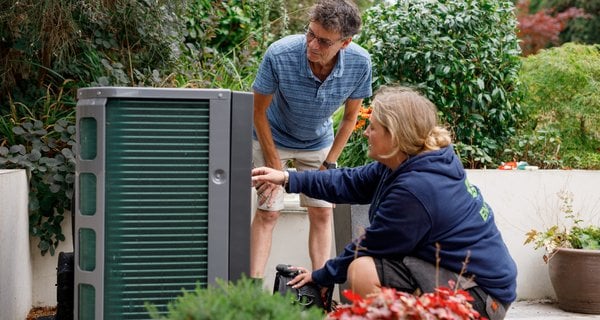Description
Ground source heat pumps use electricity to transport heat from the ground, compress it to a higher temperature and transfer it into a home via water in radiators or underfloor heating. Heat is gathered from the ground via pipes that are laid in boreholes or trenches. They are typically even more efficient than air source heat pumps, providing 3 to 4 times the amount of heat than the electricity they use.
Current status
There are an estimated 30,000–38,000 ground source heat pumps installed in UK homes, but numbers have not been rising significantly. They are mostly suited to large homes with lots of outdoor space and are supported by the Boiler Upgrade Scheme.
| Property size | Upfront cost | Running cost |
|---|---|---|
| Small | £15,200 (*£7,700) | £370 |
| Medium | £21,100 (*£13,600) | £765 |
| Large | £28,700 (*£21,200) | £1,225 |
The largest share of this cost is due to the required groundworks, with a significant proportion also resulting from upgrading radiators, installing a hot water tank and replacing pipework. Similar to air source heat pumps, this high cost applies to the first installation with ground arrays having life expectancies of over 50 years. Consumers can further benefit from time-of-use tariffs and coupling with solar panels and/or battery storage. Disruption from installation is typically 5+ days.
| Advantages | Disadvantages |
|---|---|
| Provides both space heating and domestic hot water | Very high upfront cost |
| Extremely energy efficient | Requires significant outdoor space |
| Compatible with other low-carbon technologies such as solar panels or batteries | Long installation time compared to other technology options |
| Long life expectancy |





